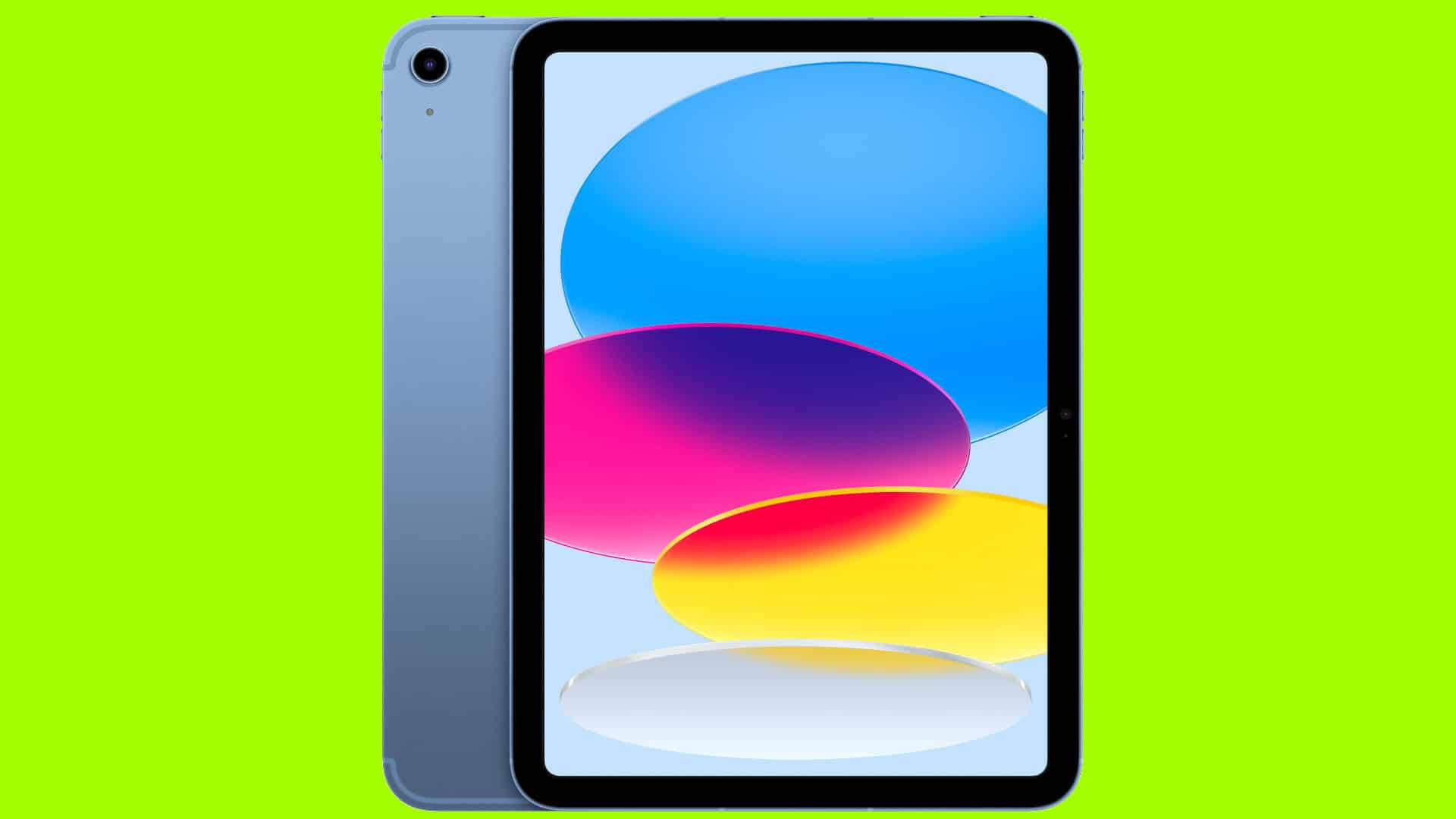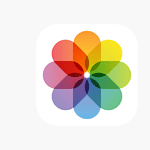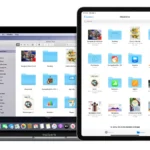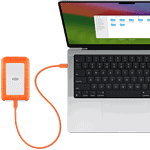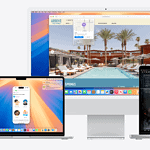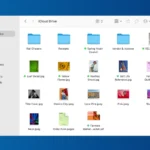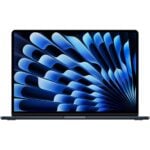Release & Price Snapshot
Apple introduced the 11th-gen iPad on March 4, 2025 and began shipping it March 12. It replaces the long-running 10th-gen model at a lower entry price—$349 for 128 GB Wi-Fi or $499 for Wi-Fi + Cellular—while doubling base storage. Education customers can order the 128 GB version for $309, and Apple continues to sell refurbished 10th-gen units for $279, keeping the 11th-gen squarely in value territory.
See the 11th gen iPad on Amazon here: https://amzn.to/3TeA4Sv
Hardware Upgrades at a Glance
| Spec | 10th-Gen iPad (2022) | 11th-Gen iPad (2025) |
|---|---|---|
| SoC | A14 Bionic | A16 Bionic (30 % faster CPU, 50 % faster GPU vs. A13) |
| Memory | 4 GB LPDDR4X | 6 GB LPDDR5 |
| Storage | 64 GB / 256 GB | 128 GB / 256 GB / 512 GB |
| Display | 10.9″ Liquid Retina (60 Hz) | Same panel, wider DCI-P3 gamut |
| Cameras | 12 MP rear, landscape 12 MP front | 4K60 video, improved HDR |
| Ports | USB-C (480 Mb/s) | USB-C (5 Gb/s) |
| Apple Pencil | 1st-gen (USB-C adapter) | USB-C Pencil + 1st-gen |
| Weight | 1.05 lb | 1.02 lb |
Real-World Performance
With the A16 and 6 GB of LPDDR5, everyday tasks feel snappier—Safari keeps more tabs alive in memory, photos render faster, and multitasking with Split View no longer stalls. Battery life remains an honest 10 hours of mixed use, but the A16’s efficiency means less throttling during extended gaming.
The 11th-gen still tops out at 60 Hz, so it can’t match the iPad Air’s 120 Hz Stage Manager smoothness, and its 6 GB RAM disqualifies it from upcoming Apple Intelligence features.
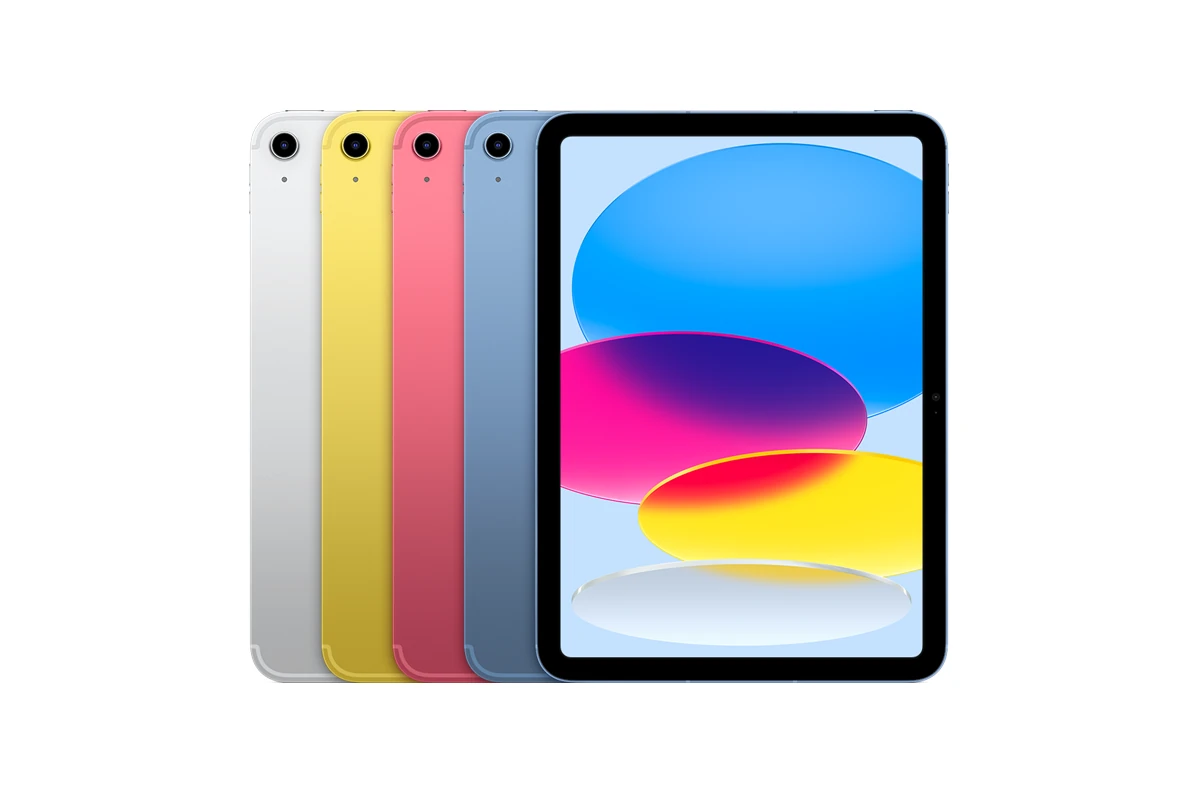
Where It Fits in Apple’s 2025 Line-Up
- iPad 11 (A16) – entry-level; best storage-per-dollar ratio.
- iPad Air 7 (M3) – starts at $599; OLED option, 8 GB RAM, Apple Intelligence.
- iPad Pro (M4) – starts at $999; tandem-OLED, 120 Hz, Pencil Pro, Thunderbolt.
For students, families, and casual creators, the A16 model finally eliminates the 64 GB pain point and pushes performance close to the 2022 iPad Air at half the launch price. Power users editing 4K video or running Logic Pro will still want the Air or Pro.
Current Street Prices & Deals (Late June 2025)

| Retailer | 128 GB Wi-Fi | Cellular | Notes |
|---|---|---|---|
| Amazon | $299 (all colors) | $449 | Frequently dips as low as $289 during Lightning deals |
| Best Buy | $299 | $449 | Matches Amazon; students get extra $25 off |
| Apple Education | $309 | $459 | Free engraving, free Apple TV+ for 3 mo. |
Expect deeper cuts July 8-11 when Prime Day expands to a four-day event, historically dropping the base model to $289 and the 256 GB configuration to $379.
Accessories & Ecosystem
- Magic Keyboard Folio ($249) adds a function-key row and kickstand but weighs more than the tablet itself.
- USB-C Apple Pencil ($79) magnetically parks on the frame but doesn’t pair wirelessly. Pressure sensitivity and lower latency make it a clear upgrade over the $19 adapter routine required by the 1st-gen model.
- Third-party hubs finally run at 5 Gb/s thanks to the faster USB-C controller, enabling smooth external-SSD video editing at 4K30.
Strengths vs. Weaknesses
| Pros | Cons |
|---|---|
| Best-in-class performance under $400 | 6 GB RAM limits future OS features |
| Doubled base storage & faster USB-C | No Apple Intelligence or Pencil Pro support |
| Frequent $299 sales make it cheaper than many Chromebooks | 60 Hz screen and single speaker row feel dated next to the Air |
Who Should Buy It
Buy the 11th-gen iPad if you need an affordable, future-proof tablet for streaming, note-taking, light gaming, or smart-home control and you’d rather spend on storage than raw horsepower. Skip it if you rely on heavy multitasking, Stage Manager workflows, or want to future-proof for Apple Intelligence—those users should look to the M3-powered iPad Air or the M4 iPad Pro.
iPad 11th Generation Battery Life
The iPad 11th generation brings solid battery performance to Apple’s tablet lineup. Users often worry about how long their devices will last between charges, especially when using them for work or school. The 11th generation iPad delivers approximately 10 hours of battery life under normal usage conditions, making it reliable for a full day of work or classes without needing a recharge.
Battery performance varies based on what you’re doing with your iPad. Watching videos or browsing the web at moderate brightness levels can yield 9-10 hours of usage, while more demanding tasks like gaming or video editing will drain the battery faster. Apple has equipped this model with all-day battery life that handles most tasks without issue.
In testing, the iPad has shown impressive results. When set to 150 nits of brightness during web browsing tests, the device lasted nearly 14 hours in some reviews. This puts it ahead of many competitors in the tablet market and makes it a strong choice for users who need reliability throughout their day.
The Apple iPad 11th Generation (2025) offers a solid battery life, generally advertised as up to 10 hours for web Browse over Wi-Fi or video watching. For cellular models, this is slightly less, typically up to 9 hours.
Here’s a breakdown of what to expect regarding its battery performance:
- Official Estimates: Apple consistently rates its iPads for around 10 hours of general usage, and the 11th Gen iPad with the A16 Bionic chip falls within this expectation.
- Real-World Performance: Reviews and user experiences generally confirm these claims. Some tests have shown it lasting even longer, with one review reporting 11 hours and 25 minutes in their battery life test, which is impressive and slightly better than the 10th Gen iPad.
- Factors Affecting Battery Life: As with any device, actual battery life can vary based on usage. Demanding tasks like gaming, heavy multitasking, or continuous video streaming at high brightness will drain the battery faster. Using accessories like the Magic Keyboard Folio can also increase battery consumption.
- Efficiency of the A16 Bionic Chip: The iPad 11th Gen features the A16 Bionic chip, which is known for its efficiency. This chip helps the iPad deliver good performance while managing power consumption effectively, contributing to its “all-day battery life.”
- Charging: The iPad 11th Gen charges via USB-C and supports 20W charging. While not considered “fast charging” compared to some other devices, it’s sufficient for daily use.
In summary, the iPad 11th Generation is recognized for its strong battery life, making it a reliable device for extended use throughout the day for most typical tasks.
Key Takeaways
- The iPad 11th generation typically provides 10 hours of battery life for everyday tasks like web browsing and video watching.
- Battery performance varies based on usage type, with screen brightness being a major factor affecting how long the battery lasts.
- The iPad’s battery outlasts many competitor tablets, making it reliable for students and professionals who need all-day power.
Design and Build
The iPad 11th generation features a practical design that balances portability with functionality. Its sleek profile houses advanced technology while maintaining the familiar iPad aesthetic Apple users have come to expect.
Dimensions and Weight
The iPad 11th generation sports a 10.9-inch display in a compact frame. It measures 9.79 inches (248.6 mm) in height, 7.07 inches (179.5 mm) in width, and just 0.28 inches (7.0 mm) in thickness. This thin profile makes it easy to slip into a bag or hold for extended periods.
Weight-wise, the Wi-Fi model comes in at 1.05 pounds (477 grams), while the Wi-Fi + Cellular version weighs slightly more at 1.06 pounds (481 grams). The weight is evenly distributed, making one-handed use comfortable for short periods.
The bezels around the screen are thin yet provide enough space to hold the device without accidentally touching the display. This design choice balances screen real estate with practical usability.
Materials and Sustainability
Apple has made significant strides in sustainable manufacturing with the iPad 11th generation. The device features a 100% recycled aluminum enclosure, reducing its environmental footprint while maintaining durability and premium feel.
The aluminum body provides excellent rigidity and helps with heat dissipation. This material choice supports the iPad’s all-day battery life by efficiently managing thermal output during extended use.
Beyond the aluminum, Apple has expanded its use of recycled materials to include:
- 100% recycled tin in the solder of the main logic board
- 100% recycled rare earth elements in all magnets
- 100% recycled gold plating in multiple printed circuit boards
The packaging has also been redesigned to be smaller and made from 100% recycled and responsibly sourced wood fiber. This reflects Apple’s ongoing commitment to reaching carbon neutrality across their entire manufacturing supply chain by 2030.
Display Features
The iPad 11th generation comes with an impressive display that combines clarity with color accuracy. The screen offers users a great visual experience whether they’re watching videos, creating artwork, or reading documents.
Screen Size and Resolution
The iPad 11th generation features a Liquid Retina display with LED backlit Multi-Touch technology and IPS technology for wide viewing angles. The screen measures 11 inches diagonally, making it compact enough to carry easily but large enough for comfortable viewing.
Resolution is impressive at 2360-by-1640 pixels, delivering 264 pixels per inch (ppi). This high pixel density ensures that text appears crisp and images show fine detail. Users won’t see individual pixels during normal use, even when holding the device close to their eyes.
The display also uses capacitive touchscreen technology, allowing for precise finger input and excellent response to touch gestures. This makes drawing, typing, and navigating apps feel natural and intuitive.
True Tone and Color Accuracy
The iPad 11th generation includes True Tone technology, which automatically adjusts the display’s white balance based on the lighting around you. This makes the screen content look more natural in different environments.
The display reaches 500 nits brightness, making it easy to use outdoors or in bright indoor settings. Higher brightness also helps with viewing HDR content, showing deeper blacks and brighter highlights.
Color accuracy on this iPad is excellent, with the display showing rich, true-to-life colors. This is particularly important for photo editing, digital art, and watching videos. The screen can display millions of colors, making gradients appear smooth without banding.
The anti-reflective coating reduces glare, making the screen more readable in bright conditions. This is helpful when using the iPad outdoors or near windows.
Hardware Specifications
The iPad 11-inch features impressive hardware that delivers reliable performance and ample storage for users. The device’s technical specs include a powerful processor, sufficient RAM, and various storage configurations to meet different needs.
Processor and RAM
The iPad 11-inch runs on the Apple A16 chip, a significant improvement over previous generations. This processor offers faster performance for everyday tasks and demanding applications. The A16 chip helps apps launch quickly and run smoothly.
Users will appreciate the 6 GB of RAM included in this model. This memory allows for better multitasking capabilities and smoother switching between apps. The combination of the A16 processor and 6 GB RAM makes this iPad suitable for:
- Graphic design work
- Video editing
- Gaming
- Document creation
- Video streaming
The A16 chip also enhances battery efficiency. It manages power better than older processors, contributing to the all-day battery life that Apple advertises for the device.
Storage Options
The iPad 11-inch comes in three main storage configurations:
| Storage Size | Best For |
|---|---|
| 128 GB | Casual users, web browsing, document work |
| 256 GB | Photo collections, app enthusiasts |
| 512 GB | Video creators, gamers, professionals |
The 128 GB model serves as the entry-level option. It provides enough space for essential apps, documents, and some media files. Most casual users find this storage sufficient for daily needs.
For users who take many photos or download lots of apps, the 256 GB version offers a good balance. This mid-tier option gives more flexibility without the premium price of the largest model.
The 512 GB configuration targets power users who work with large files. Video editors, artists, and those who keep extensive media libraries benefit from this expanded storage capacity.
Battery Performance
The iPad 11th generation offers impressive battery capabilities with long-lasting power and convenient charging options. Apple has designed this tablet with everyday users in mind, balancing performance with energy efficiency.
Battery Life Expectancy
The iPad 11th generation features a robust battery that delivers 10 hours of typical use including web browsing, video streaming, and light productivity tasks. This all-day battery performance makes it reliable for work, school, or entertainment without constant recharging.
Many users report getting 9-10 hours of use at medium brightness settings. However, battery performance can vary based on usage patterns. Demanding apps like video editing or gaming will drain the battery faster than reading or web browsing.
Updates can sometimes affect battery life temporarily. Some users have noted that after iOS updates, battery performance might decline briefly until the system optimizes itself.
AppleCare+ coverage includes battery service if the device’s battery holds less than 80% of its original capacity. This protection gives users peace of mind about long-term battery health.
Charging Capabilities
The iPad 11th generation features a USB-C port for charging, replacing the Lightning connector found on older models. This modern connection offers faster data transfer and more versatile charging options.
The device supports fast charging with the right power adapter. Using a 20W or higher USB-C power adapter allows the iPad to reach 50% charge in about 30 minutes. This quick top-up feature is perfect for busy users who need power in a hurry.
Standard charging takes approximately 2-3 hours for a full battery recharge. The iPad can be charged with various USB-C accessories, including power banks, laptop chargers, and car adapters.
Battery performance while charging remains smooth, allowing users to continue using the device even during recharging. The iPad also monitors battery health, providing useful information about charging cycles and optimization tips to extend battery lifespan.
Camera and Imaging
The iPad 11th generation comes equipped with capable camera hardware for both photography and video needs. These cameras offer useful features for video calls, document scanning, and casual photography without needing to reach for your phone.
Primary and Secondary Cameras
The iPad 11th generation features a 12-megapixel wide camera on the back that captures clear, detailed photos. This primary camera works well in various lighting conditions and is perfect for scanning documents or taking quick photos.
On the front, there’s a 12-megapixel ultra-wide camera that significantly improves video calling quality. This front camera includes Center Stage technology, which automatically keeps you in frame during video calls, even as you move around.
Both cameras perform well for everyday tasks. The front camera is particularly useful for virtual meetings and online classes, while the rear camera helps with document scanning and reference photos.
Video Capabilities
The iPad 11th generation supports impressive video recording options. The rear camera can capture 4K video with smooth stabilization, making it suitable for creating content or recording important moments.
The front camera records in 1080p HD quality, ensuring you look clear during FaceTime calls or when creating personal video content. Video performance is reliable in good lighting conditions.
Advanced camera features include time-lapse video creation and slo-mo recording at 120 fps. These capabilities let users experiment with different video styles without needing additional equipment.
The iPad maintains good video quality throughout its all-day battery life, allowing extended recording sessions without constant recharging.
Connectivity Options
The iPad 11th generation comes with various connectivity features that keep you connected wherever you go. These options blend wireless technologies with essential wired connections to ensure versatility for different usage scenarios.
Wireless Technologies
The iPad 11th generation supports advanced wireless connectivity options for seamless internet access and device pairing. It features Wi-Fi 6 technology, providing faster speeds and improved performance in crowded areas compared to previous Wi-Fi standards.
Bluetooth 5.3 enables quick and reliable connections to accessories like keyboards, headphones, and speakers. This newer version offers improved range and more stable connections than older Bluetooth standards.
For users who need internet on the go, cellular models include both 4G LTE and 5G capabilities. The 5G connectivity delivers significantly faster download and upload speeds when you’re away from Wi-Fi networks.
The device also includes built-in GPS for accurate location services in maps and navigation apps. Cellular models support eSIM technology, allowing you to activate a cellular plan digitally without a physical SIM card.
Wired Connections
The iPad 11th generation features a USB-C port that replaces the older Lightning connector found on previous generations. This modern connection type offers several advantages for users.
The USB-C port enables faster data transfers when connecting to computers, external drives, and other devices. You can transfer large files, photos, and videos much more quickly than with the older connector.
This versatile port also supports charging the iPad’s all-day battery and works with a wide range of USB-C accessories. You can connect external displays, cameras, audio interfaces, and even SD card readers with the appropriate adapters.
Unlike the Pro models, the standard iPad 11th generation doesn’t include Thunderbolt or USB 4.0 capabilities in its USB-C implementation. However, the port still provides enough speed and functionality for most everyday tasks and connections.
Software and Compatibility
The iPad 11th generation comes with powerful software features that enhance its battery efficiency while offering broad compatibility with various media formats. The device balances performance and power consumption through its operating system and supports numerous file types for versatile everyday use.
Operating System
The iPad 11th generation runs on iPadOS, Apple’s tablet-specific operating system. iPadOS is designed to optimize battery usage while providing a smooth user experience. The latest compatible version, iPadOS 18, brings significant improvements to battery management.
Key battery-saving features include:
- Background App Refresh controls that let users decide which apps can update in the background
- Low Power Mode that extends battery life by reducing performance and background activity
- Screen Time settings to monitor and limit usage
The system supports efficient Multitasking with Split View and Slide Over features that don’t significantly drain the battery when used properly. Battery usage statistics in Settings help users identify power-hungry apps.
Supported File Formats
The iPad 11th generation supports numerous file formats while maintaining efficient battery consumption during media playback.
Audio formats compatible with the device include:
- AAC (8 to 320 Kbps)
- MP3 (16 to 320 Kbps)
- Protected AAC (from iTunes Store)
- FLAC and Apple Lossless
For video content, the iPad supports H.264 and HEVC formats, with the latter being more battery-efficient for high-resolution content. The device can play videos with Dolby Atmos sound, though this feature uses slightly more power.
Document formats like PDF, DOCX, and XLSX are handled efficiently. For image editing, the iPad supports HEIF, JPEG, PNG, and RAW formats without excessive battery drain. The battery life varies based on which media formats are being used and at what resolution.
Accessories and Ecosystem
The iPad 11th generation works with a variety of accessories that enhance its functionality and battery life. These accessories connect through the tablet’s USB-C port or wirelessly, creating a versatile ecosystem for productivity and creativity.
Official Accessories
The iPad 11th generation supports the Apple Pencil, which turns the tablet into a powerful drawing and note-taking device. This stylus offers precision control and pairs easily with the iPad. Users report minimal battery drain when using the Apple Pencil for extended periods.
The Magic Keyboard provides a laptop-like experience with backlit keys and a built-in trackpad. It connects via the Smart Connector, which requires no pairing or charging. This means the keyboard draws power directly from the iPad, slightly reducing the 10-hour battery life.
Apple’s Magic Keyboard Folio offers similar functionality with a more flexible design. It includes:
- Detachable keyboard
- Protective cover
- Function keys row
- Adjustable viewing angles
These official accessories integrate seamlessly with iPadOS, offering minimal impact on overall battery performance.
Third-Party Accessories
Many companies create affordable alternatives to Apple’s premium accessories. Popular third-party keyboards from Logitech and Zagg offer similar functionality at lower prices. Most connect via Bluetooth, which uses slightly more battery than Smart Connector accessories.
External battery packs can extend the iPad’s battery life considerably. These range from slim power banks to keyboard cases with built-in batteries. Some users pair their iPad with power-delivering USB-C hubs to charge while connecting to external displays or storage.
Protective cases with built-in stands help optimize battery life by positioning the iPad at angles that require lower screen brightness. Matte screen protectors reduce glare, allowing users to lower brightness settings and save battery.
Third-party stylus options provide basic functionality for note-taking without the premium price of Apple Pencil. These typically have minimal impact on the iPad’s battery life.
Pricing and Options
The iPad 11-inch offers various pricing tiers based on storage capacity and connectivity options. Consumers can choose between Wi-Fi only or cellular models with different price points to match their needs.
Initial Cost
The iPad 11-inch with A16 chip starts at $499 for the base 128GB Wi-Fi model. This entry-level option gives you the full iPad experience with a high-quality Liquid Retina display and the powerful A16 processor.
Storage upgrade options significantly impact pricing:
- 128GB: $499 (Wi-Fi) / $649 (Cellular)
- 256GB: $599 (Wi-Fi) / $749 (Cellular)
- 512GB: $799 (Wi-Fi) / $949 (Cellular)
Color choices include blue, purple, yellow, and silver, with no price difference between color options. The cellular models cost approximately $150 more than their Wi-Fi counterparts, offering the flexibility of internet access anywhere.
For budget-conscious shoppers, the 128GB Wi-Fi model provides excellent value. However, those needing more storage for media or apps should consider the higher capacity options.
Service and Support
AppleCare+ protection for the iPad 11-inch costs $79 for two years of coverage or can be purchased as a monthly subscription. This extended warranty provides two incidents of accidental damage protection every 12 months, each subject to a $49 service fee.
Without AppleCare+, out-of-warranty repairs can be expensive:
- Screen damage: $279-$329
- Battery replacement: $99-$149
- Other damage: Up to $499
Apple offers free technical support for 90 days after purchase. The standard warranty covers manufacturing defects for one year but not accidental damage.
Apple Stores provide in-person support through the Genius Bar. Many authorized service providers also offer repairs, though sometimes at higher costs than Apple’s own service centers.
Performance in Action
The iPad 11th generation demonstrates impressive battery efficiency during various tasks. The device maintains power while handling both everyday activities and demanding professional applications.
Daily Usage Scenarios
The iPad 11th generation shines in everyday use with battery life lasting around 10 hours. This makes it perfect for people who need a portable device throughout their day.
Web browsing, email checking, and social media scrolling barely tax the battery. Many users report only needing to charge every couple of days with moderate use.
Video streaming shows minimal battery drain. You can watch multiple movies or binge several TV episodes on a single charge. The battery handles video calls well too, though they do consume more power than passive activities.
Reading e-books and digital magazines is extremely efficient on the iPad. Users can read for days before needing a recharge, especially when using airplane mode.
Games affect battery life differently based on their complexity. Simple games barely impact the battery, while graphics-intensive games drain power faster but still allow for hours of play.
Professional Applications
Professional apps showcase the iPad’s versatility while maintaining good battery performance. The A16 chip balances power and efficiency for these demanding tasks.
Creative Applications:
- Photo editing: 5-7 hours of continuous use
- Video editing: 3-5 hours of active editing
- Digital art: 6-8 hours with Apple Pencil
Document creation and editing in apps like Pages, Numbers, and Keynote barely tax the system. Users can work for 9-10 hours at half brightness on these productivity tasks.
Professional users appreciate how the iPad handles multitasking. Even with split-screen apps running, the battery provides enough power for a full workday.
Recent battery tests comparing different iPad models show the 11th generation holds its own against more expensive versions. This makes it a cost-effective choice for professionals who need reliable battery performance.
Environmental Impact and Certification
The iPad 11th generation shows significant environmental improvements with reduced carbon emissions and increased use of recycled materials. Apple has made strides in creating more sustainable products while maintaining energy efficiency.
Manufacturing Process
The manufacturing of iPad tablets has become more environmentally friendly over the years. Apple has reduced emissions significantly compared to previous generations. For newer iPad models, emissions have decreased by up to 40% against baseline measurements.
This improvement comes from changes in production methods and material sourcing. Apple uses cleaner energy in its manufacturing facilities. They’ve also shortened supply chains to reduce transportation emissions.
The company has committed to making carbon-neutral products by 2030. This goal drives continuous improvements in how iPads are made. Energy-efficient factories and smarter design choices help cut the carbon footprint during production.
Recycling and Disposal
iPad recycling has become easier with Apple’s trade-in and recycling programs. These programs help keep electronic waste out of landfills. They recover valuable materials for reuse in new products.
Recent iPad models contain over 20% recycled content. This includes:
- 100% recycled gold in the plating of multiple circuit boards
- 100% recycled tin in the solder of the main logic board
- 100% recycled lithium in the battery cathode
The iPad’s aluminum enclosure uses recycled materials. This reduces the need for newly mined resources. Apple has designed the iPad for easier disassembly at end-of-life.
When disposing of an iPad, users should not throw it in regular trash. Many electronic retailers offer free recycling services. Apple Stores accept old devices for proper recycling or refurbishment.
Frequently Asked Questions
iPad users often face several common battery concerns. Understanding proper charging habits, software impacts, and usage patterns can significantly improve battery performance and longevity.
How can I extend the battery life of my iPad 11th generation?
To get more battery life from your iPad, adjust your screen brightness to a lower setting. High brightness is one of the biggest power drains.
Close background apps that aren’t in use. Many apps continue running and using battery power even when you’re not actively using them.
Turn off unnecessary features like Background App Refresh. This feature lets apps update content when on Wi-Fi or cellular, which uses extra power.
Enable Low Power Mode when your battery is running low. This reduces background activity and performance to extend battery life.
Using Wi-Fi instead of cellular data when possible can save significant battery power. Cellular connections typically use more energy than Wi-Fi.
What are common factors that affect the iPad 11th generation’s battery longevity?
Screen brightness has a major impact on battery drain. Higher brightness settings use significantly more power than lower settings.
Heavy gaming and video streaming put extra stress on the battery. These activities use both the processor and graphics intensively.
Poor network conditions force your iPad to use more power searching for signals. This is especially true in areas with weak cellular coverage.
Background processes and notifications constantly wake your device. Each alert activates the screen and uses processing power.
Extreme temperatures can harm battery performance. Apple recommends using iPads in environments between 32° to 95° F (0° to 35° C).
How does the battery performance of the iPad 11th generation compare to its predecessors?
The 11th generation iPad offers similar battery life to recent models, with Apple claiming up to 10 hours of web browsing on Wi-Fi. Real-world usage may vary based on settings and tasks.
User reports suggest the 11th generation maintains the standard that iPads should lose roughly 10% battery per hour during light usage. This is consistent with previous generations.
Battery efficiency has improved slightly compared to older models. Better processor optimization helps balance performance with power consumption.
What are the best practices for maintaining the iPad 11th generation battery health?
Avoid fully draining your battery regularly. Keeping your iPad between 20% and 80% charged is ideal for long-term battery health.
Update to the latest iPadOS version. Software updates often include power management improvements and bug fixes for battery issues.
Apple states that iPad batteries are designed to retain 80% of their capacity after 1000 complete charge cycles. This means the battery should last for years with proper care.
Remove protective cases during charging if your iPad gets warm. Heat buildup during charging can damage the battery over time.
Use original Apple chargers or certified alternatives. Poor quality chargers can damage your battery and reduce its lifespan.
Are there any known battery life issues with the iPad 11th generation, and how can they be resolved?
Some users report faster battery drain after iPadOS updates. Typically, this resolves within a few days as the system completes background indexing and optimization.
Excessive battery drain is sometimes caused by specific apps. Check Battery Usage in Settings to identify apps using unusual amounts of power.
Resetting all settings (not content) can fix persistent battery problems. This option in Settings restores default system settings without deleting your data.
If battery drain continues, consider a factory reset as a last resort. Always back up your data first through iCloud or a computer.
For serious battery issues, contact Apple Support. Batteries showing less than 80% capacity within the warranty period may qualify for free replacement.
How accurate are the battery life tests reported for the iPad 11th generation?
Official battery tests are conducted under controlled conditions that may not reflect real-world usage. Apple’s 10-hour claim is based on specific testing scenarios.
Independent reviews often show mixed results with real users reporting between 7-7.5 hours of average use. This is noticeably less than the advertised figures.
Some users report significantly shorter battery life, with as little as 2.5 hours of screen time during basic tasks. These reports are often from specific usage patterns or defective units.
Testing methodology varies widely between reviewers. Factors like screen brightness, app usage, and network conditions greatly affect results.
For the most accurate assessment, check multiple reviews and forums where users share real-world experiences rather than relying solely on manufacturer claims.

